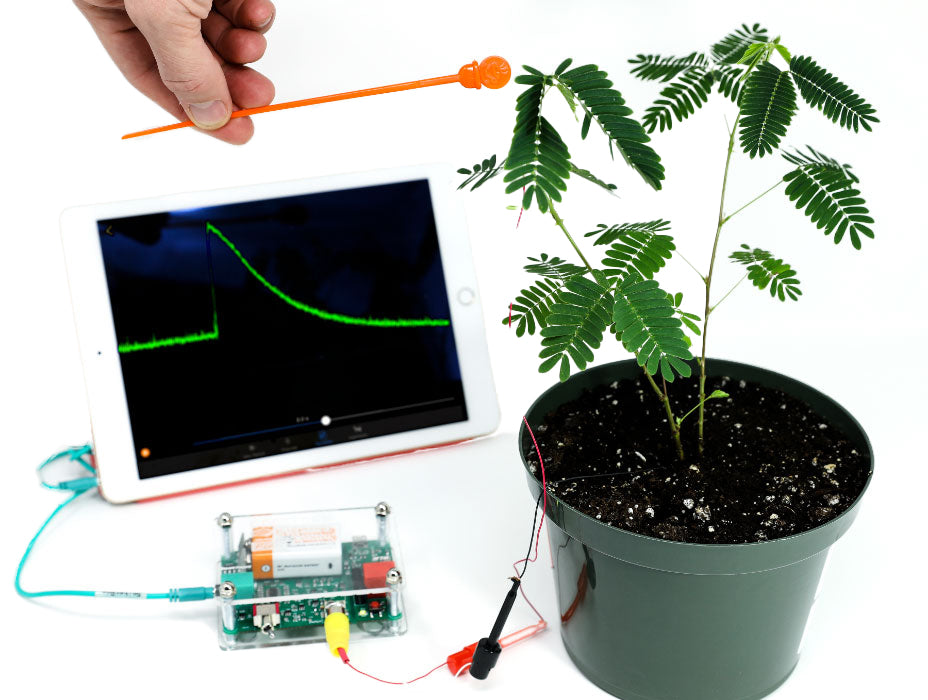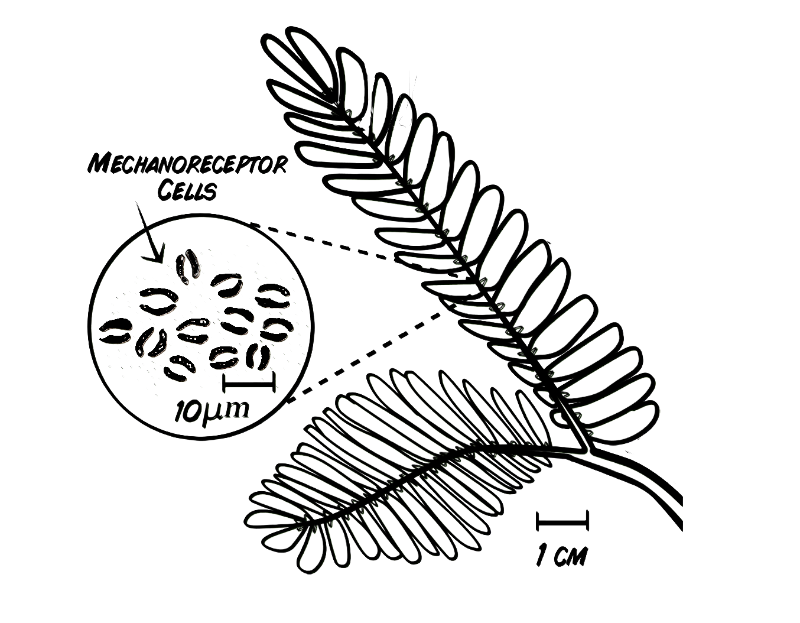
Electrophysiology of Sensitive Mimosa Pudica

Imagine a plant that acts shy! The Sensitive Mimosa (Mimosa Pudica) appears to sulk away this when you touch it— but how is behaviour in a plant possible? In this lab... you will peer into the secret messages to observe how touch information is relayed inside this wonderful plant.
About experiment
What Will You Learn?
- How action potentials in plants trigger rapid movements.
- The interplay between ion channel activity, osmotic imbalance, and water flow in plant cells.
- How to record plant electrical signals using the Plant SpikerBox and SpikeRecorder software.
Background
Meet the Sensitive Mimosa, an intriguing tropical plant whose name literally means “shy.” Growing naturally in sunny, humid areas from Brazil to Thailand, this plant has charmed people with its rapid and almost animal-like responses. When gently touched, its delicate leaf segments close up neatly, returning to normal after a short while if given plenty of bright light. A firmer touch, however, can prompt the entire leaf stem to drop suddenly, revealing defensive thorns and deterring curious predators.
In today’s experiment, you’ll have the chance to replicate these distinctive behaviors and test the plant’s recovery time firsthand. Try it before we begin. How quickly will your Mimosa spring back into action under good lighting conditions? Your observations will help unlock some fascinating secrets of plant behavior!
Mimosa pudicas can be found from online resellers as small seedling plants. You can try to grow from seeds too, but it can be challenging... only about 10–20% germinate, and only one-third survive the seedling phase).
Procedure
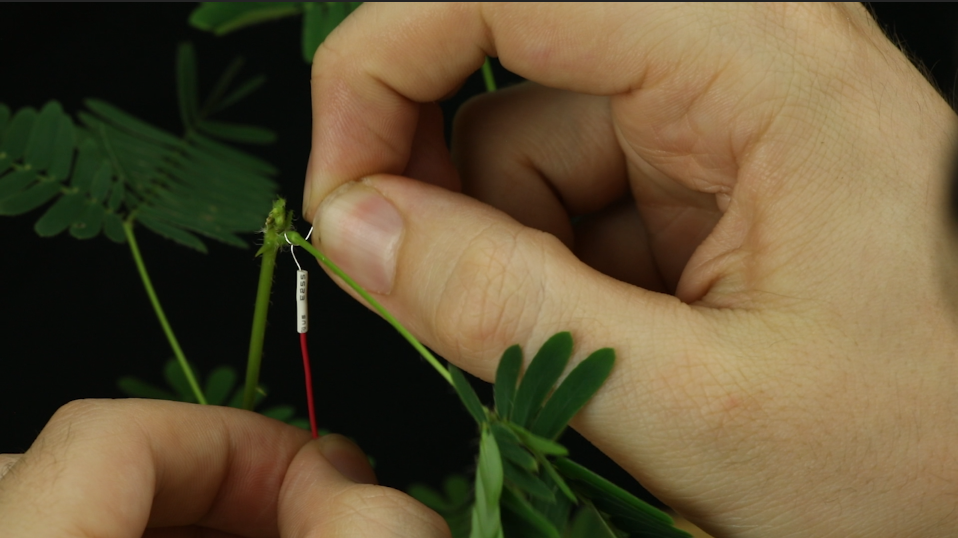
Electrode Preparation & Placement:
- Using the red recording wire with the silver tip, carefully wrap the silver tip around a sizable Mimosa branch near the joint where the branch meets the stem (pulvinus). Expect that this may cause the branch to droop temporarily.
- Apply a small dab of conductive gel along the wrapped silver tip—avoid excess gel as it can shunt the ionic signal.
- Insert the black grounding pin (with its long black wire) into the soil of the plant pot to establish a good ground.
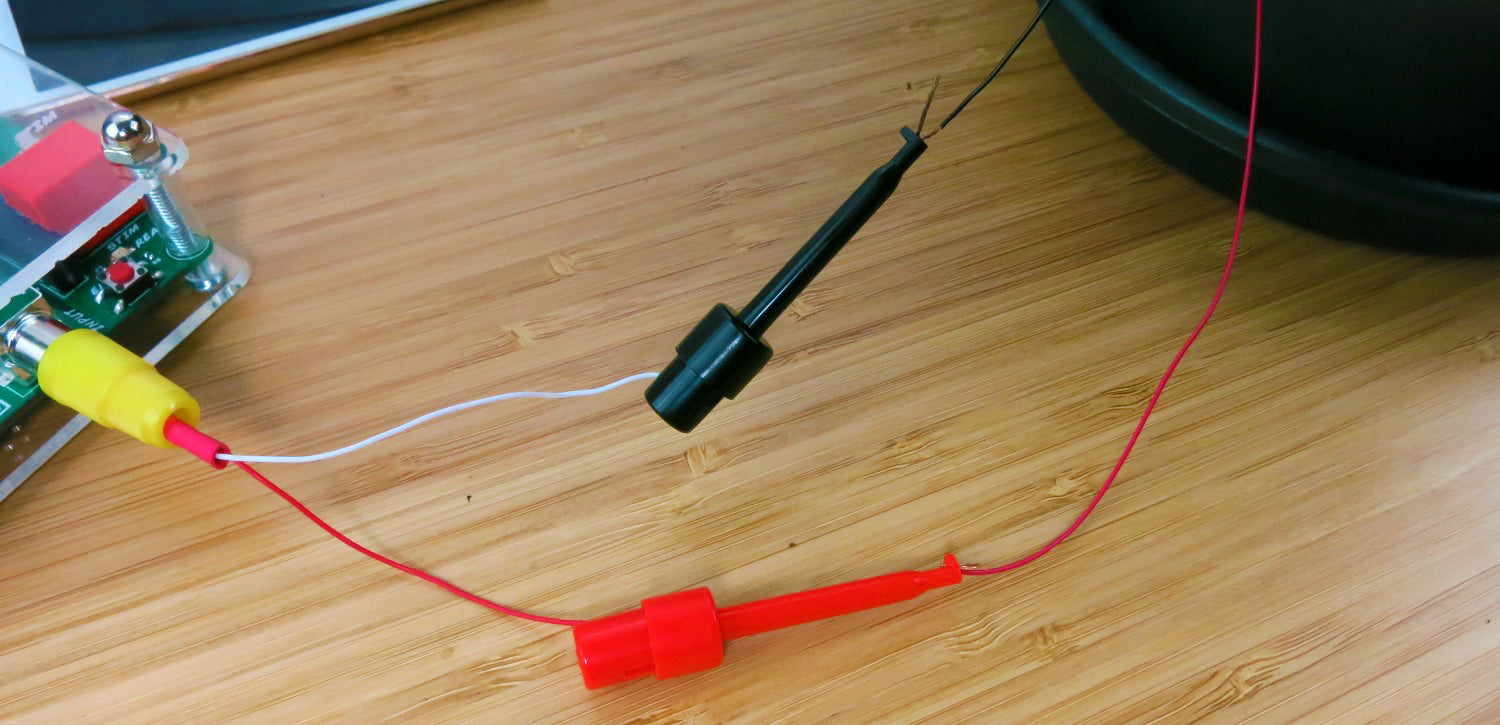
Setup:
- Connect the red and black electrode clips to the corresponding wires on your Plant SpikerBox using the yellow RCA jack.
- Allow approximately 10 minutes for the Mimosa to recover from any movement induced by electrode placement.
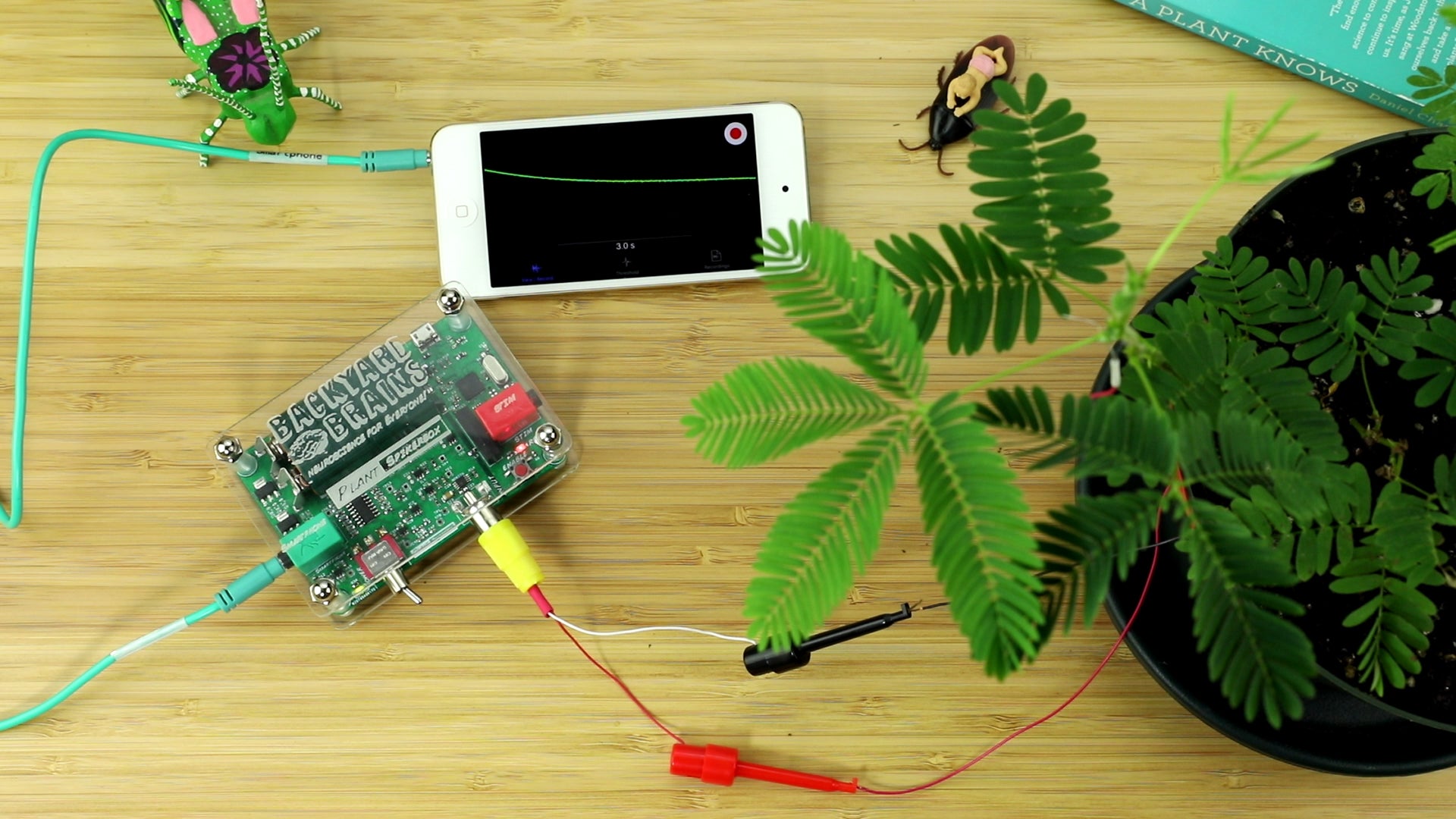
Data Recording:
- Connect the Plant SpikerBox to your computer or smartphone
- Launch the SpikeRecorder software.
- Press the “Record” button.
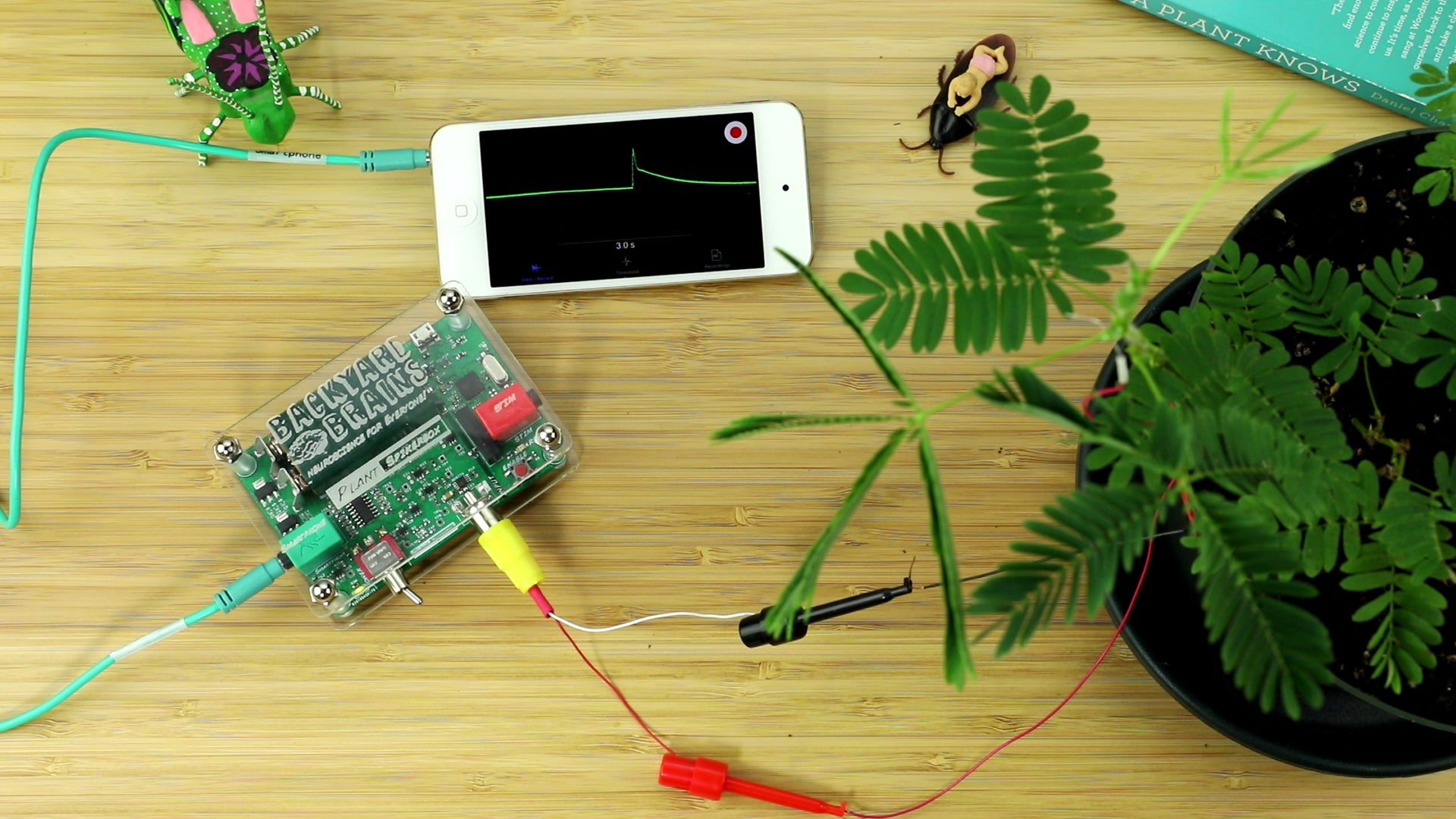
Stimulus & Observation:
- Using a plastic probe, pen, or your finger, deliver a forceful tap or flick to the Mimosa’s leaves. Observe the rapid branch movement and note anything you see displayed on SpikeRecorder.
- If the recorded signal appears to have a “flat-topped” it may be too large, adjust the gain by pinching the display (on mobile) or using the zoom controls (on PC) to better resolve the signal.
- Repeat a few times on different parts of the plant.
Results & Analysis
Note the timing of your recorded waveforms with the plant's behviour to deduce the involvement of ion channels and water movement in the rapid leaf closure.
Examine the shape of the action potentials, noting the characteristic shape. How does this compare to that of a neuron or muscle action potential?
-
Related Products


